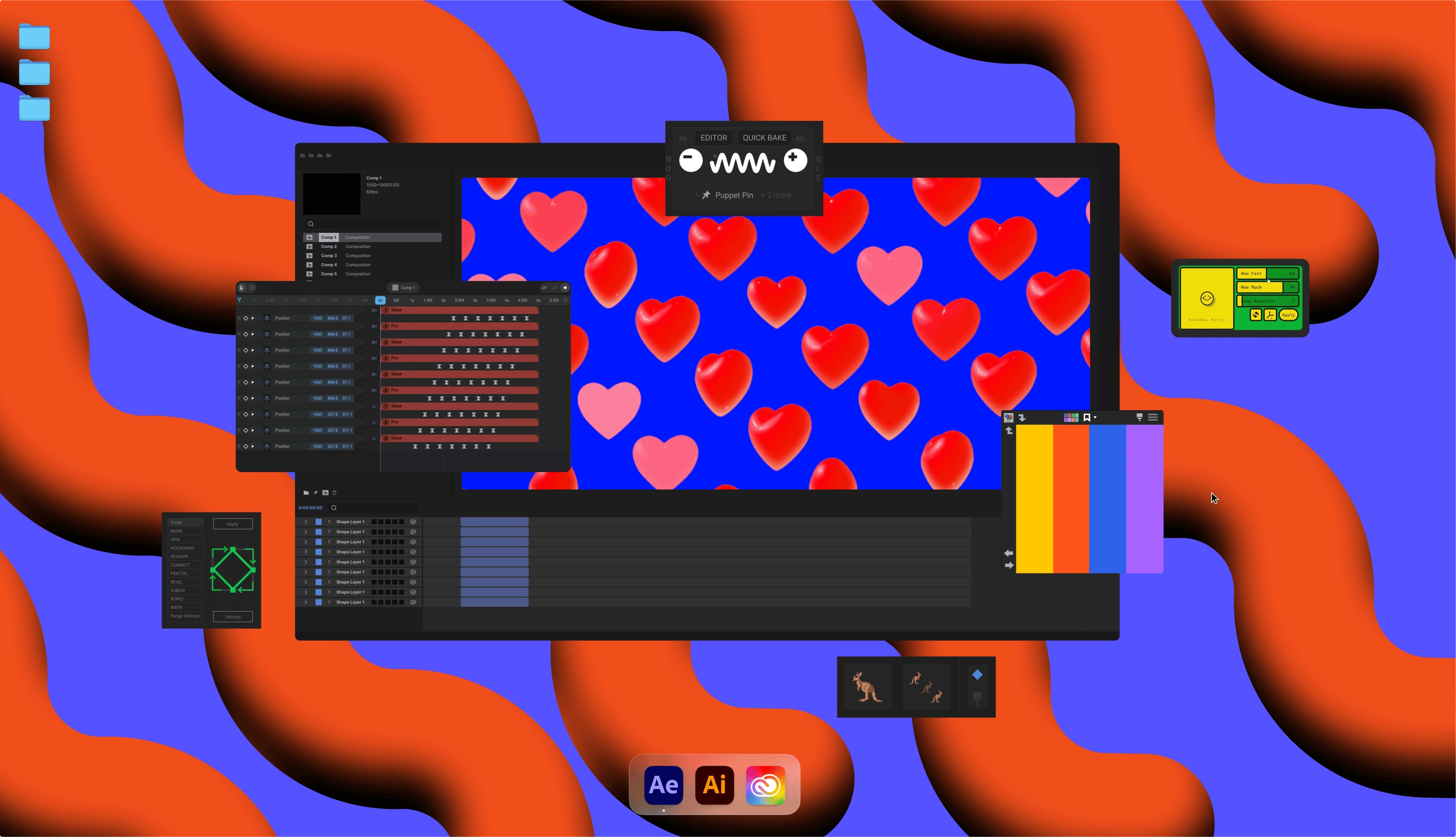How to Install Plugins in Adobe After Effects

Adobe After Effects is a powerful creative tool that lets you seamlessly composite visual elements—perfect for visual effects and motion graphics projects. Thanks to its extendable architecture, third-party developers can enhance your workflow with a range of creative plugins.
What Is an After Effects Plugin?
A plugin is a small, integrated tool that runs directly within After Effects to boost both the quality and speed of your work. Depending on the plugin type, you’ll find it accessible from various menus inside After Effects.

In this example image, Skew Pro, Colors and Noodle are third party tools floating on top of the After Effects main user interface. They are not bundled with After Effects by default, but are installed separately.
Understanding the Plugin Types
After Effects supports three main types of third-party tools.
Before installing, identify which type you have:
- Script - Files ending in .jsx or .jsxbin.
- Extension - Files ending in .zxp.
- Plugin - Files ending in .exe, .dmg, or other formats.
Installing Scripts (.jsx / .jsxbin)
Scripts are designed to perform a series of tasks automatically, streamlining your workflow. They can either run in the background without a user interface or come with a dedicated panel that offers buttons, sliders, and other controls for specific tasks.
- Open After Effects and navigate to File > Scripts.
- Choose Install ScriptUI Panel if your script includes a user interface; otherwise, select Install Script.
- Use the file picker to locate your .jsx or .jsxbin file.
- Restart After Effects to complete the installation.
Installing Extensions (.zxp)
Extensions allow developers to create scripts with more refined user interfaces by embedding a lightweight web browser within After Effects.
- Install a ZXP Installer if you don’t already have one.
- Open the ZXP Installer and select your .zxp file.
- Click Install and then restart After Effects.
- Launch your extension via Window > Extensions.
Installing Plugins (.exe, .dmg, other)
Although people often use the term “plugin” loosely, true plugins in After Effects are a specific category. They can automate workflows and even inject code directly into the application. This means they might appear as an “Effect” that alters your composition viewer or as a utility that fundamentally changes how After Effects operates.
- Run the installer: On Windows, double-click the .exe file. On a Mac, open the .dmg file. For other file types, follow the developer’s specific installation instructions.
- Follow the on-screen instructions to complete the installation.
- Restart After Effects once installation is complete.

I hope this guide makes setting up your new tools straightforward and helps you dive right into your creative projects!
